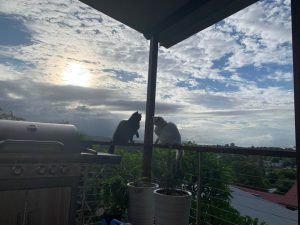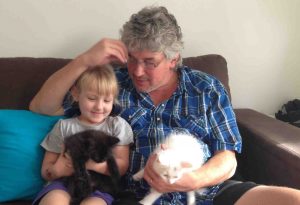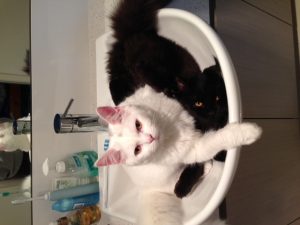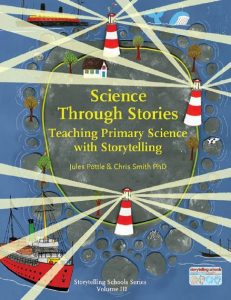I never had warm-blooded pets as a child. I had turtles that would escape and be found behind a sofa.
 In 1985, my soon-to-be veterinarian first wife brought home two kittens from the vet clinic: I named them Clark and Kent.
In 1985, my soon-to-be veterinarian first wife brought home two kittens from the vet clinic: I named them Clark and Kent.
I’ve gone through a lot of cats over the years.
During our 16-year marriage which created four skilled and tough daughters, my ex would castrate the males on the kitchen counter and remind me that I slept with her.
I didn’t fuck around.
Now that I’m in Brisbane, I went away for a weekend talk and came home to find two fur-expelling kittens that were indoor felines because we were in a townhouse. Now that we own our own property, they roam the grounds, chase away magpies, and occasionally bring a dead (or live) possum into the house.
Why doesn’t Australia focus on the rodent-evolved possums like the Kiwis do?
Jessica Camille Aguirre of The New York Times Magazine writes that present national Australian policy is, feral felines are driving the country’s native species to extinction. Now a massive culling is underway to preserve what’s left of the wild.
In the deep winter weeks of last July, Shane Morse and Kevin Figliomeni nearly always got up before the sun rose. They awoke next to the remains of a campfire or, occasionally, in a roadside motel, and in the darkness before dawn they began unloading poisoned sausage from their refrigerated truck. The sausage was for killing cats. One morning near the end of the season, Morse and Figliomeni left the Kalbarri Motor Hotel on the remote western coast of Australia, where they dined on steak and shellfish the night before, and drove along the squally coastline. They kept their eyes fixed to the sky. If it rained, there would be no baiting that day.
 Morse and Figliomeni unpacked their boxes, filled with thousands of frozen sausages they produced at a factory south of Perth, according to a recipe developed by a man they jokingly called Dr. Death. It called for kangaroo meat, chicken fat and a mix of herbs and spices, along with a poison — called 1080 — derived from gastrolobium plants and highly lethal to animals, like cats, whose evolutionary paths did not require them to develop a tolerance to it. (The baits would also be lethal to other nonnative species, like foxes.) As the sun brightened the brume, the baits began to defrost. By midmorning, when Morse helped load them into a wooden crate inside a light twin-engine propeller Beechcraft Baron, they were burnished with a sheen of oil and emitted a stomach-turning fetor. The airplane shot down the runway and lifted over the gently undulating hills of the sand plains that abut the Indian Ocean.
Morse and Figliomeni unpacked their boxes, filled with thousands of frozen sausages they produced at a factory south of Perth, according to a recipe developed by a man they jokingly called Dr. Death. It called for kangaroo meat, chicken fat and a mix of herbs and spices, along with a poison — called 1080 — derived from gastrolobium plants and highly lethal to animals, like cats, whose evolutionary paths did not require them to develop a tolerance to it. (The baits would also be lethal to other nonnative species, like foxes.) As the sun brightened the brume, the baits began to defrost. By midmorning, when Morse helped load them into a wooden crate inside a light twin-engine propeller Beechcraft Baron, they were burnished with a sheen of oil and emitted a stomach-turning fetor. The airplane shot down the runway and lifted over the gently undulating hills of the sand plains that abut the Indian Ocean.
Rising over the mantle of ghostlike smoke bushes that carpeted the ground to the treeless horizon, the plane traced a route over the landscape, its bombardier dropping 50 poisoned sausages every square kilometer. It banked over the deep cinnamon sandstone gorges carved by the Murchison River, which extends to the coastal delta, surveying the edge of one of earth’s driest, hottest continents, where two to six million feral cats roam. As it flew, it charted the kind of path it had done dozens of times before, carpeting thousands of hectares of land with soft fingers of meat, laying down nearly half a million baits in the course of one month. Dr. Death, whose real name is Dr. Dave Algar and who is the principal research scientist in the Department of Biodiversity Conservation and Attractions for the state of Western Australia, told me that he began developing the recipe for the poisoned sausages by examining cat food in supermarkets and observing which flavors most thrilled his own two cats. As Morse said: “They’ve got to taste good. They are the cat’s last meal.”
These fatal airdrops owed their existence to Australia’s national government, which decided in 2015 to try to kill two million feral cats by 2020, out of grave concern for the nation’s indigenous wildlife — in particular, groups of small, threatened rodent and marsupial species for which cats have become a deadly predator. The Royal Melbourne Institute of Technology estimated that 211,560 cats were killed during the first 12 months after the plan was announced. Dropping lethal sausages from the sky is only part of the country’s efforts to eradicate feral cats, which also include trapping, shooting and devising all manner of poison-delivery vessels.
 When the policy was announced, it was met in some quarters with apoplexy. More than 160,000 signatures appeared on half a dozen online petitions entreating Australia to spare the cats. Brigitte Bardot wrote a letter — in English, but with an unmistakably French cadence — beseeching the environment minister to stop what she called animal genocide. The singer Morrissey, formerly of the Smiths, lamented that “idiots rule the earth” and said the plan was akin to killing two million miniature Cecil the Lions. Despite anger from some animal rights groups and worries about the potential effects on pet cats, Australia went ahead with its plan, and the threatened-species commissioner replied by mail to both Bardot and Morrissey, politely describing the “delightful creatures” already lost to the world.
When the policy was announced, it was met in some quarters with apoplexy. More than 160,000 signatures appeared on half a dozen online petitions entreating Australia to spare the cats. Brigitte Bardot wrote a letter — in English, but with an unmistakably French cadence — beseeching the environment minister to stop what she called animal genocide. The singer Morrissey, formerly of the Smiths, lamented that “idiots rule the earth” and said the plan was akin to killing two million miniature Cecil the Lions. Despite anger from some animal rights groups and worries about the potential effects on pet cats, Australia went ahead with its plan, and the threatened-species commissioner replied by mail to both Bardot and Morrissey, politely describing the “delightful creatures” already lost to the world.
After that, Morse and Figliomeni spent much of each baiting season behind the wheel of their rig, hauling boxes to the most remote corners of one of the least populated places in the world, to beat back what Australia has deemed an invasive pest. As is the case on islands around the world, the direction of life in Australia took a distinctly different route than that on the larger continents, and unlike places like North America, the country has no native cat species. Over millions of years of isolation, Australia’s native beasts became accustomed to a different predatory order, so while cats aren’t necessarily more prevalent there than anywhere else, their presence is more ruinous. They have also become nearly ubiquitous: According to the estimates of local conservationists, feral cats have established a permanent foothold across 99.8 percent of the country, with their density reaching up to 100 per square kilometer in some areas. Even places nearly devoid of human settlement, like the remote and craggy Kimberley region, have been found to harbor cats that hunt native animals. The control effort, to which Western Australia’s baiting program belongs, was meant to ease the predation pressure that cats exerted in every corner of the country where they had settled. Faced with a choice between a species regarded as a precious pet and the many small creatures of their unique land, Australians seemed to have decided that guarding the remaining wild might mean they would have to spill some blood.
BTW, Ted Nugent sucks.











